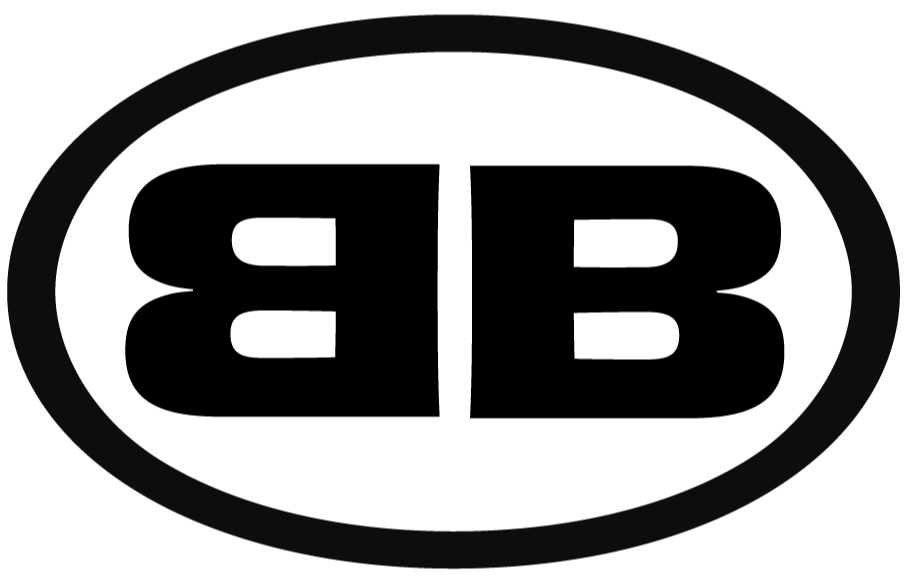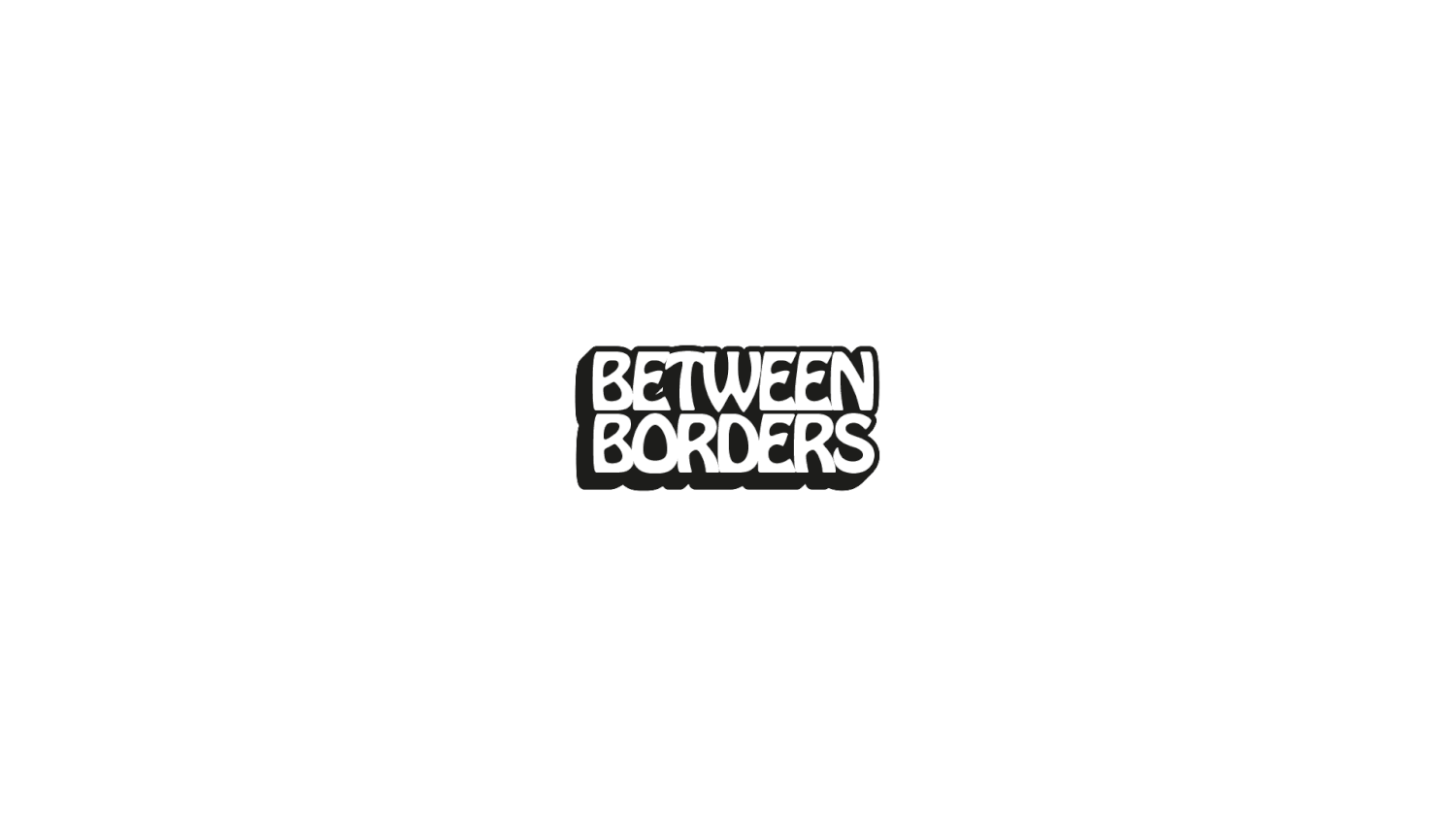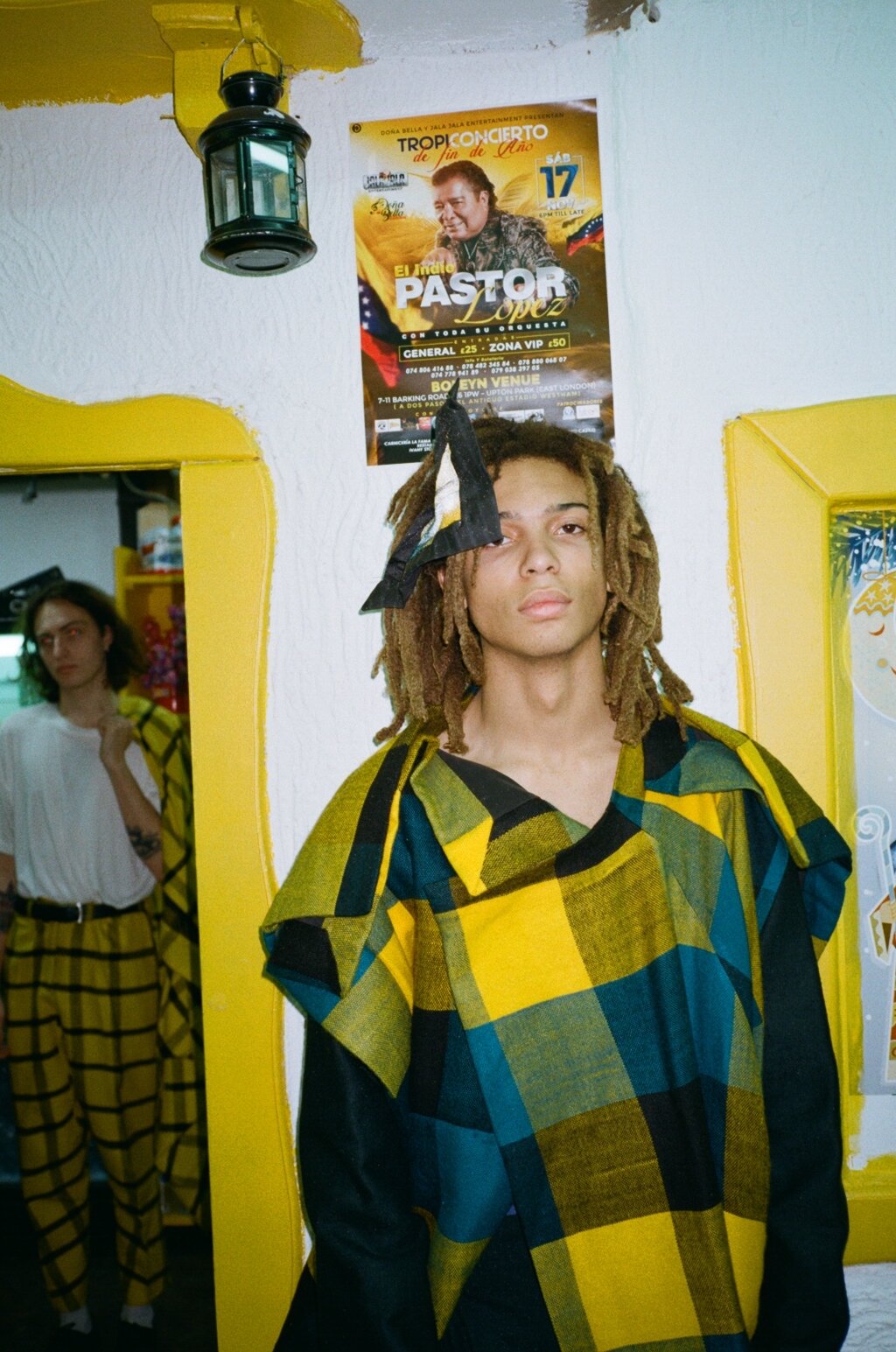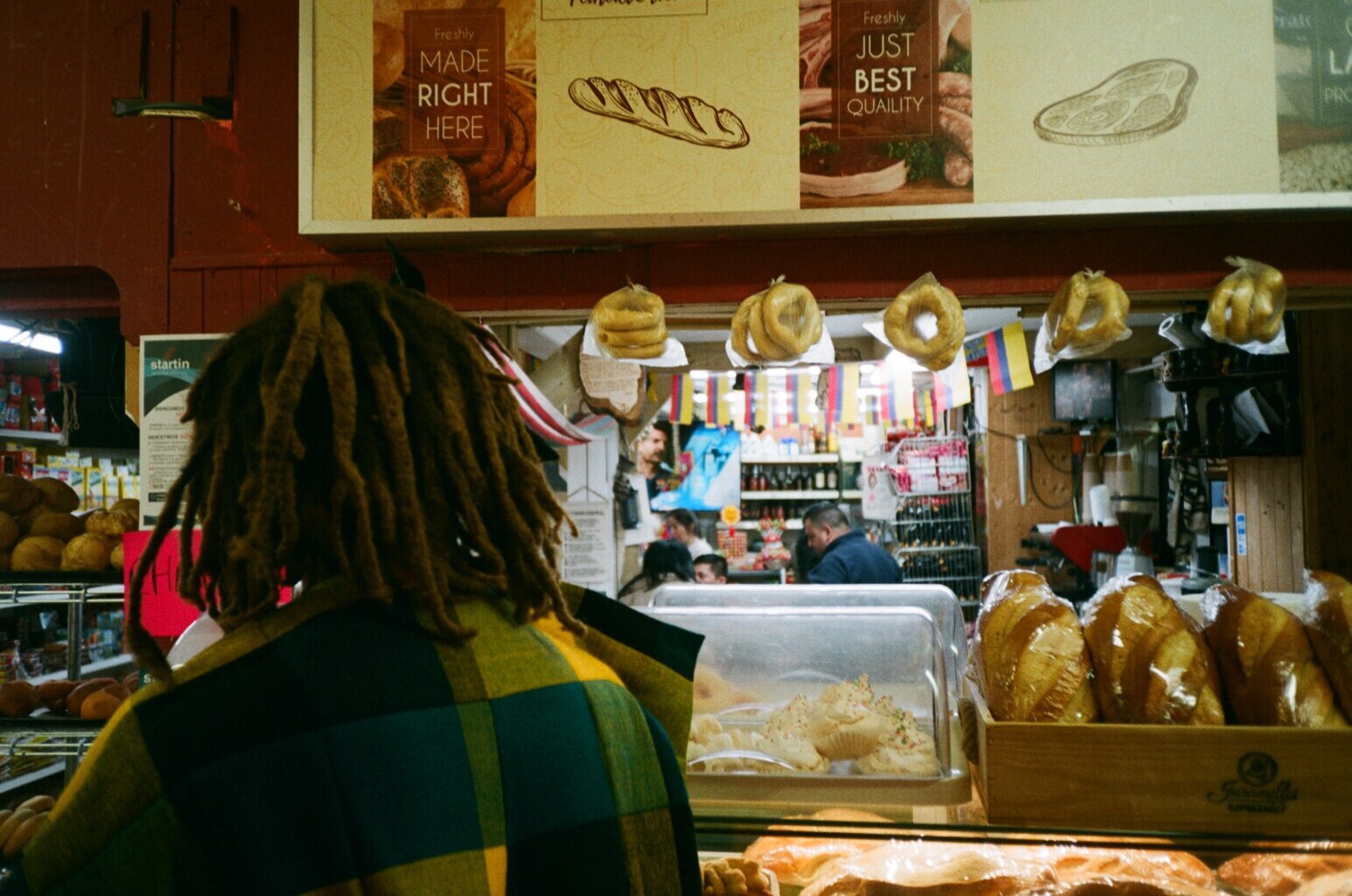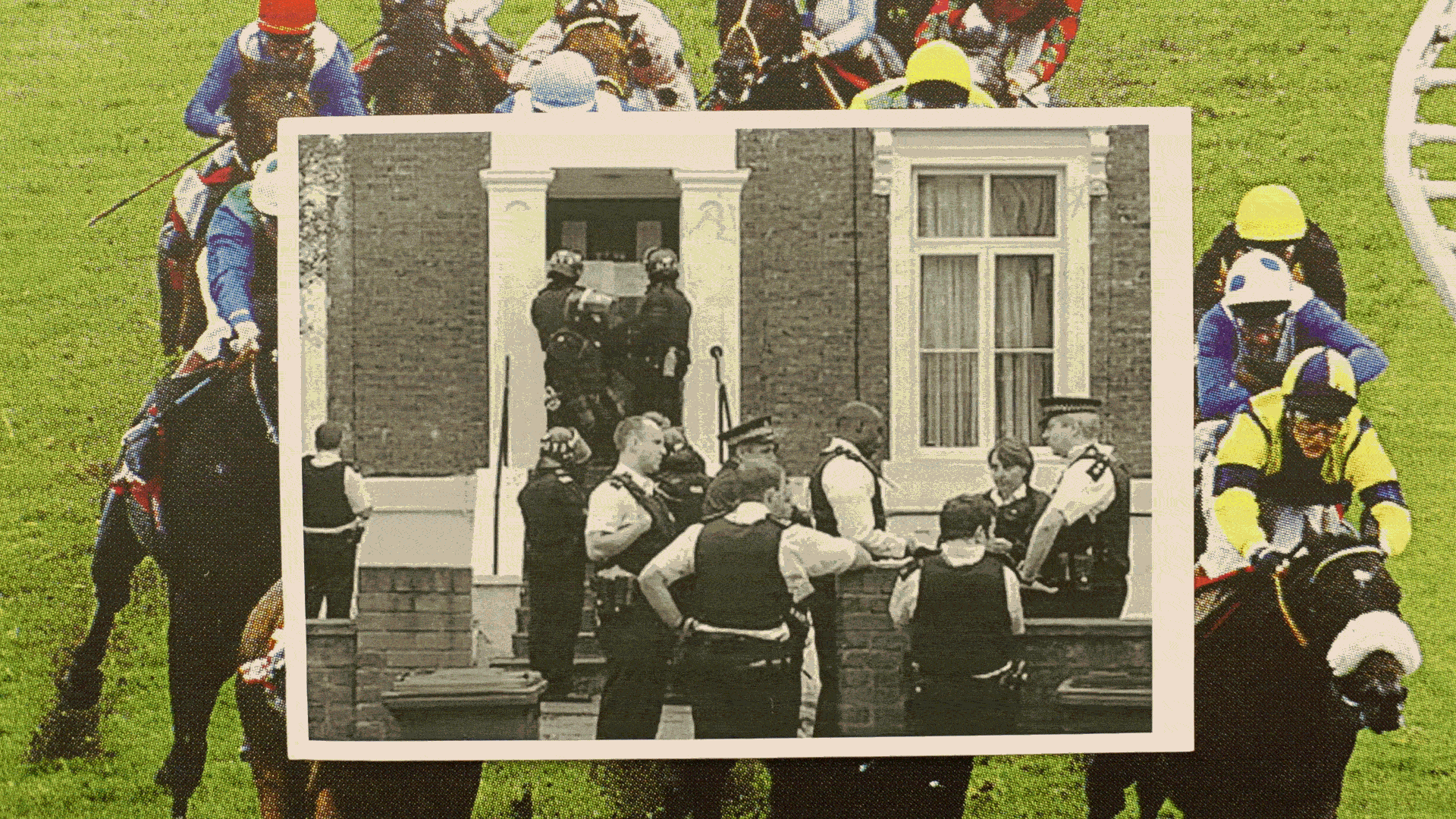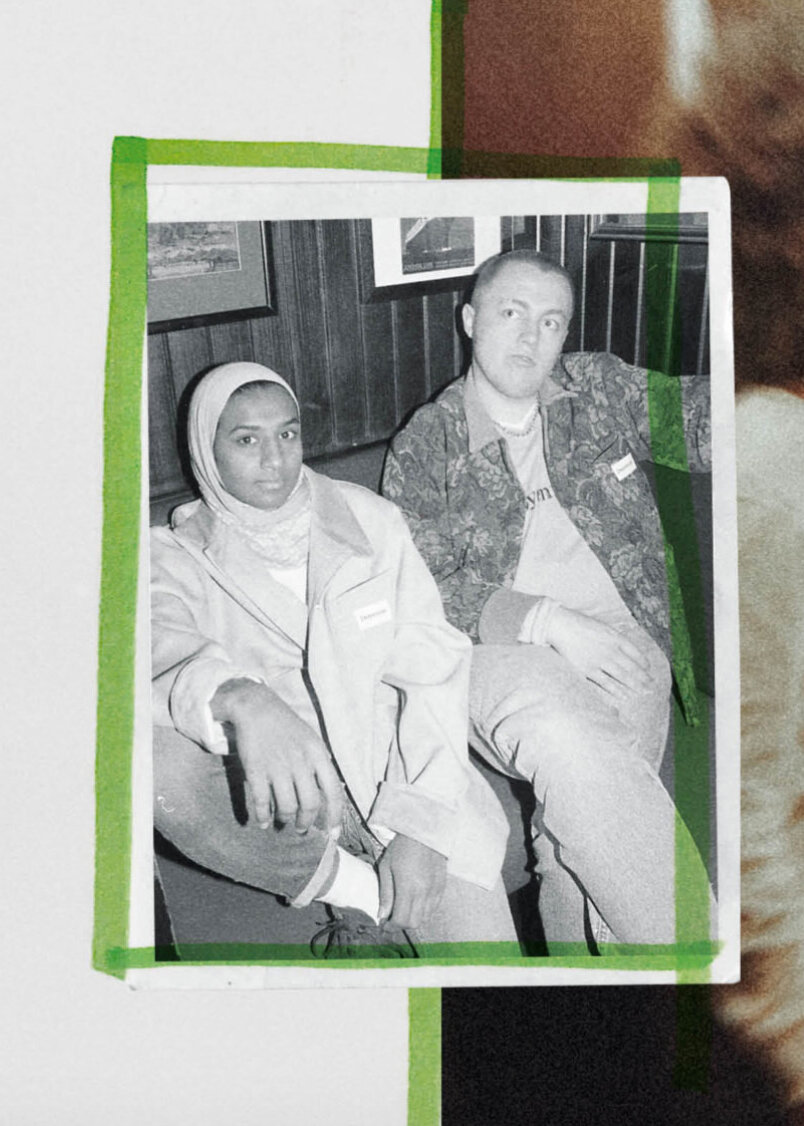BETWEEN BORDERS X ROSA AVILEZ
Art/Culture
BETWEEN BORDERS X
ROSA AVILEZ
We sat down with Menswear designer Rosa Avilez and caught up after what was an extremely busy 2018 for the emerging designer. Having been part of the alternative, student organised graduate show ‘Burn The Man’ we discussed what it was like being part of the collective. Rosa described all the extra responsibilities that came from creating, organising and producing their own fashion show.
The fabric employed by Rosa in this collection tells a story, it has a history. Drawing inspiration from her Honduran roots, Rosa utilised fabric weaved in Honduras, fabric weaved in the mountainous region of Intibucá by traditional weavers. The sourcing and logistics of this fabric proved challenging at times, but only added to the narrative behind her work. Read our full interview below and check out some more of her work by following the link to her site:https://www.rosaavilez.co.uk/
Imagery:
Luc Hinson
Words:
Emily Pearman
BB: How important a role does your identity play in your design aesthetic?
RA: It has quite a strong relationship with what I’m doing now, even working part time at a tweed tailors. It’s the same concept although it is a lot more Scottish and patriotic, it’s still acknowledging a craft and being proud of it. I feel it’s just slightly different when it’s a Western culture compared to a non-Western culture. That's because then ethical issues, especially fair pay become factors to be considered.
BB: Within your work it's you talking about your own influences, your own background. Rather than a western label choosing to shine a light on another culture.
RA: Well that’s actually something I found quite difficult. When I first started I did a small capsule collection and I couldn’t get hold of any Honduran fabrics because of the cost. I found this lovely lady called Emilia who ran a Guatemalan fabric business, so I approached her and used her fabrics. Eventually, when I did gain access to Honduran fabrics it felt great as I was able to fully utilise Honduran crafts. Producing this collection has meant so much more than something being just sustainable, it’s about identity and the way we present what we make. Now I’ve realised that, and I think its less about trying to show that the brand Is doing something good, and more just about, kind of keeping it real I guess.
BB: Was it hard to source the fabrics used in this collection?
RA: in one word, yes. My grandfather passed away so my dad was over in Honduras looking after him before he passed away. Whilst there, he managed to source some fabrics for me. I managed to do some basic sketches of weaves that I liked that my dad could show to these Honduran weavers. But what you need to understand is that it’s not like there’s one traditional style - like a tartan. These ladies just weave it, they use whatever colours are available to them, whether its bright greens or pinks it’s just sort of really vivid. I said I’m not going to to do anything to take away from what they did naturally, I’m just going to work off of their own creativity. They implement their own identity into their work.
It was definitely made easier because my dad was over there. Still, communication was extremely difficult - I couldn’t phone them, they only had WhatsApp and would only get service once in a while - which made regular correspondence impossible! The communication was hard, the shipping was expensive, but before we even got the fabric out of Honduras there was a lot of internal logistics to overcome. The weavers were based in Intibucá and my Family were in La Ceiba, so even internal logistics became an added dimension to consider.
On refelction, It was kind of a one off. I don’t think without investment I would be able to access those fabrics again, and it’s a dying craft. For me, it was always much more about showing off the fabrics and the craftsmanship behind them rather than some crazy conceptual idea behind it. It was always about showing off the work of these wonderful weavers. It was so nice that it had someone else’s input, someone else’s creativity incorporated into the final collection.
“
WE’RE A BIT MORE PROUD OF IT BECAUSE WE ARE MORE AWARE OF WHAT MAKES US UNIQUE, WHAT DISTINGUISHES US.
PHOTOGRAPHY: ZAINEB ABELQUE
PHOTOGRAPHY: Eldon Sommers
PHOTOGRAPHY: Luc Hinson
“
WHEN YOU KNOW WHO WORKED ON THE FABRIC YOU'RE NOW USING, IT ADDS A LEVEL OF CONNECTION AND INTIMACY TO THE RELATIONSHIP WITH WHAT YOU'RE MAKING.
BB: Did you feel, that in your pursuit of sustainability your creativity was limited at all?
RA: I guess I couldn’t make as many changes to my design decisions that I could have if I hadn’t been using fabrics from so far away. There were loads of small limitations I came across, it’s kind of opened me up a bit more. The main thing I guess was that I had no idea what the fabric was actually going to look like when it came back. I had to use it, I couldn’t decide no that’s not okay and send it back.
Originally the green and yellow fabric I used, that’s prominent in one of the jackets, it was all woven and still rough. Initially, I expected that it was going to be a bit darker. Then I found that ironing it loads and pressing it gave it this amazing shine, and this is something I never would have found out if I had said no to the fabric because I didn’t initially love it.
The journey makes you love it even more. It’s even more of your work that you’ve put into it, and there was a sort of distant connection and relationship with what they had done in Honduras and what I was now working on in the UK. It’s funny because when you know who worked on the fabric you are now using it adds a level of connection and intimacy to your relationship with what you're making.
BB: Did you feel like you learnt more about your own background?
RA: Absolutely, You take it for granted when it’s just your own family. My uncles and aunties still live in Honduras, But my dad doesn’t really speak about it with as much pride as I wish he would. I think with this project he discovered just how curious I was about it. It felt, at times quite raw to get his honest open opinions on Honduras, but he moved over here in his 20s so I think he feels a little removed from it all.
BB: With my mum, I think there is an element of 'Britishisation', where she sort of tried to conform to British culture and does so at the cost of her own Mauritian identity...
RA: I think our generation is much more open to looking back, and finding more about our background. We’re a bit more proud of it because we are more aware of what makes us unique, what distinguishes us. It’s good to be proud of your identity and learn more about it. I still wish I knew even more about my identity. I don’t know half as much as I know about my British-American side. Even when you do learn more about your identity it’s not necessarily the facts but about how you romanticise certain elements and stories. Who knows If it's true or not but everyone has different experiences. I feel like it always comes back to a love story somewhere, someone decides they have to drop everything and move half way across the world for love.
PHOTOGRAPHY: Luc Hinson
BB: How did you enjoy working with Burn the Man and producing a student led show?
RA: It was a journey. To begin with we had so much energy, the further along we got we thought "wow there is so much to think about". Our building was a warehouse, which was great it was a great venue but also... there was nothing that came with it. We had to source fire exit signs, toilets, public liability insurance, furniture, legal issues. Yeah I don’t know, it got very complicated but we managed to pull it off and we learnt from it. Being student led as well it meant we were able to make key creative decisions in the process that we wouldn’t have been able to otherwise.
BB: You got some great coverage on the show
RA: Yeah, that was unexpected, the coverage was amazing we got a feature from DAZED. Actually, more than that it was great to have everyone’s family and friends involved and there at the catwalk show. It seems so stupid that universities produce students to a standard, and they should want to show off their students work. So, we wanted to change that, we wanted an opportunity for everyone to show. We were able to set up our own showrooms as well, we were able to curate our own spaces, catwalk shows, lighting - we had control.
BB: Did you encounter any drawbacks whilst hosting the show?
RA: We got absolutely rinsed financially. Everyone paid a deposit, but the list of fees just continually got longer and longer. It was hard, there were a lot of responsibilities and a lot of work to put on really inexperienced people. We all learnt a lot about how to put on a show, and what you should and shouldn’t do. Now that we’ve graduated it would be great to keep it going and help other people show and exhibit their work. I guess, to give them the chance to show it to press, and to share the experience with their family and friends.
BB: We noticed the show seemed very family orientated, the demographic of the queue outside was... not your normal fashion show.
RA: That was the thing, everyone got five priority tokens to give to our families and then everyone forgot about the press needing priotiy tokens. That made it quite nice actually, reinforced the fact that it was a celebration of our work.
BB: What was the impetuous behind setting up Burn the Man?
RA: When you’re looking at all the designers doing anything, you always see a show. That’s a huge part of the whole project, it would be like learning choreography and never dancing. It’s a celebration at the end to finalize it all... and to get the nice pictures right? It’s a closure and a celebration of what you have done. Sure, there were problems and mistakes but we graduated, we finished, we did it. We have to take it upon ourselves to showcase our work.
BB: It shows real initiative: You were bold enough to make it happen yourselves. It’s the contradictory thing to me, about fashion degrees is that you all go through the same processes of creation and design, but the university gets to choose a finite number of you at the end of the degree to show. It just doesn’t seem fair..
RA: I did the press show for LCF as well and I felt that throughout the whole process it was very ordered and controlled, like: "this is the time you’re going to be here, the shows going to be like this, the set up is going to be at this time, this is how your looks are going to look". The creative director of the show made a lot of decisions, and that’s why I thought it was so, so important to do our own student led show, to allow everyone to have every creative control over their own work.
Within Burn The Man there were 40 different people to work alongside and navigate. The benefit of that was that there were groups who handled the graphics, groups who handled the music, people who sorted out benches for the show. People just did what they had to do. Maybe uni's underestimate what students are capable of, they treat them just as students when I think they are beyond that. You give someone a chance and they will take it and make something of it. At Burn The Man we felt like we knew the crowd, we were all informed, we knew which press were going to be there for us from each outlet. We were actively connected to every part of the show.
BB: It’s funny because with a fashion degree something that is so creative from the first instance, and then you get to the pinnacle, where you’re showing for your university and all of a sudden all that creative control just disappears.
RA: I would wholeheartedly agree, I would recommend to anyone graduating from a fashion course to start their own show. Maybe separate it and compartmentalise it more than we did. Maybe a show with just bespoke tailoring or whatever. I just recommend to anyone to do it!
BB: I guess it's rewarding that people recognise that you are going out of your way to express yourselves and showing it, you guys deciding you were going to do it and then actually doing It is quite rare, you followed through on it... That Is an achievement in itself
RA: That is very true, and there are a lot of characters within the 40 of us that did it, that need to be massively thanked and proud of themselves for getting through that. There is a lot of stress in graduating in itself, and then you add a show on top of that. We actually showed the day after our final hand-in, so some people hadn’t slept..
We were designing and making throughout the year, but we were also gearing up for the show throughout the whole year. As everyone was designing they did so knowing that we were going to be showing it. It changed the atmosphere a lot, we were helping each other out, we were sharing opinions. We want our catwalk show at the end of the year to look the best it can. We want to make everyone’s the strongest it can be. Knocking each other down doesn’t help anyone at all.
BB: within other fashion courses that’s quite rare, I mean you hear people bitching and arguing already at the start of the year, and it's all about who is getting to show in the catwalk show at the end of the year.
RA: As soon as someone knows who got chosen they change their opinion, everyone has their own design style you can’t even begin to compare, it’s ridiculous.
BB: if you were working together instead of against each other you would get a lot more out of it, you would want each other to succeed.
RA: you might actually come out of it wanting to collaborate and work with your classmates in years to come. A group of people’s ideas will always be better than a single persons.
BB: The Burn the Man name, where did that come from?
RA: in the first meeting, everyone was obviously very pissed with .... someone, I can’t say who but you know. And originally it was going to be called Fuck the man, but then we realised wait our grandmas are going to be coming to this we can’t swear in it...
I'm still reflecting on it now, It really was fun, we got so much out of it. We learnt a lot from it and we got great exposure. I don’t know If anyone got a job directly from Burn the Man but putting on a show demonstrates initiative and makes you stand out from the crowd. Who knows, maybe we’ve inspired the next generation of designers coming through behind us. I would definitely love to do it again thinking about it, I'd kind of forgot about it until today.
BB: So, what next?
RA: I’m still designing, my boyfriend is really involved in music and I love the idea of designing items of clothing that you get to see on people on stage, it’s just nice to see someone real wearing the clothes and getting feedback about how it fits, if it’s actually wearable and comfortable, so hopefully something involving that!

